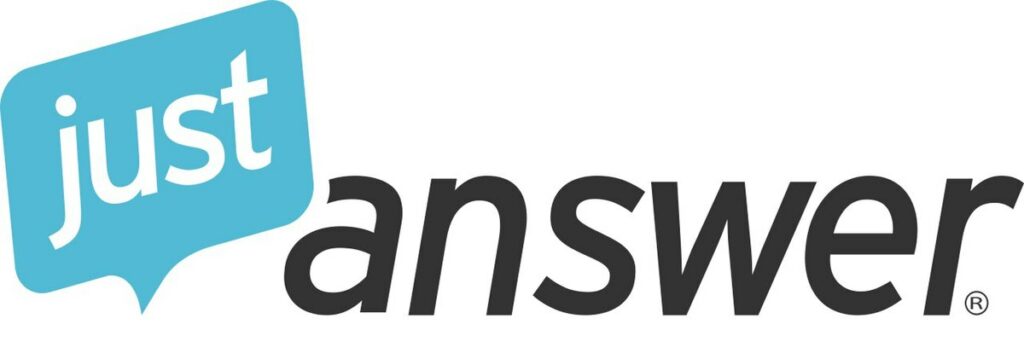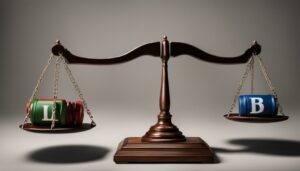When faced with financial difficulties, bankruptcy can be a viable option to help you regain control of your finances. Chapter 13 bankruptcy is a type of bankruptcy that allows individuals to reorganize their debts and create a repayment plan over a period of three to five years. This type of bankruptcy is often referred to as a “wage earner’s plan” because it is typically used by people who have a steady income but are struggling to pay off their debts. In this article, we will discuss who can file for Chapter 13 bankruptcy, how it works, and the benefits and drawbacks of this type of bankruptcy.
What is Chapter 13 Bankruptcy?
Chapter 13 bankruptcy is a type of bankruptcy that allows individuals to create a repayment plan to pay off their debts over a period of three to five years. Unlike Chapter 7 bankruptcy, which requires the liquidation of assets to pay off debts, Chapter 13 bankruptcy allows individuals to keep their assets while still repaying their debts. In order to file for Chapter 13 bankruptcy, individuals must have a regular source of income and their debts must fall within certain limits.
How Does Chapter 13 Bankruptcy Work?
When you file for Chapter 13 bankruptcy, you will need to submit a repayment plan to the court that outlines how you plan to repay your debts. The repayment plan must be approved by the court and must be completed within three to five years. During this period, you will make regular payments to a court-appointed trustee, who will distribute the funds to your creditors.
Step 1: Determine Your Eligibility. To be eligible for Chapter 13 bankruptcy, you must have a regular source of income and your unsecured debts must be below a certain threshold. You will also need to complete a credit counseling course before filing for bankruptcy.
Step 2: File a Petition. Once you have determined that you are eligible, you will need to file a petition for Chapter 13 bankruptcy with the bankruptcy court. You will need to provide documentation of your income, expenses, and debts.
Step 3: Create a Repayment Plan. As part of the filing process, you will need to create a repayment plan that outlines how you plan to repay your debts over a period of three to five years. The plan must be approved by the court and must comply with bankruptcy laws.
Step 4: Attend a Meeting of Creditors. After filing for bankruptcy, you will need to attend a meeting of creditors, where you will meet with your creditors and the court-appointed trustee. The trustee will review your repayment plan and ask you questions about your finances.
Step 5: Make Regular Payments to the Trustee. Once your repayment plan has been approved, you will need to make regular payments to the court-appointed trustee. The trustee will then distribute the funds to your creditors according to the terms of the repayment plan.
Step 6: Complete the Repayment Plan. You will need to make payments to the trustee for a period of three to five years, depending on the length of your repayment plan. Once you have completed the repayment plan, any remaining eligible debts will be discharged, and you will no longer be responsible for them.
Step 7: Attend Financial Management Course. After completing the repayment plan, you will need to attend a financial management course before your bankruptcy case can be closed.

Main differences Chapter 7 & Chapter 13
Chapter 7 and Chapter 13 bankruptcy are two different options available to individuals who are struggling with debt. Chapter 7 bankruptcy is often referred to as “liquidation bankruptcy,” as it involves the liquidation of the individual’s assets to pay off their debts. In order to qualify for Chapter 7 bankruptcy, individuals must pass a means test that determines whether their income is below a certain level. If they pass the means test, they may be able to have their debts discharged in a matter of months.
On the other hand, Chapter 13 bankruptcy is often referred to as “reorganization bankruptcy.” It involves the creation of a repayment plan that allows individuals to pay off their debts over a period of three to five years. During this time, the individual must make regular payments to a trustee, who then distributes the funds to creditors. Chapter 13 bankruptcy is often a good option for individuals who have a regular source of income but are struggling to pay off their debts.
One key difference between Chapter 7 and Chapter 13 bankruptcy is the impact on an individual’s assets. In Chapter 7 bankruptcy, the individual’s assets may be sold to pay off their debts, while in Chapter 13 bankruptcy, the individual is able to keep their assets as long as they continue to make their payments to the trustee.
Another difference is the impact on an individual’s credit score. Chapter 7 bankruptcy can have a more significant impact on an individual’s credit score, as it involves the discharge of debts in a short amount of time. Chapter 13 bankruptcy, on the other hand, involves a longer repayment period, which can result in a more gradual impact on an individual’s credit score.
Overall, the choice between Chapter 7 and Chapter 13 bankruptcy depends on an individual’s specific financial situation and goals. While Chapter 7 bankruptcy may offer a quicker resolution to debt, Chapter 13 bankruptcy may allow individuals to keep their assets and create a manageable repayment plan.
So which one is right for me?
Choosing the right type of bankruptcy, whether Chapter 7 or Chapter 13, can be a difficult decision. It is recommended that you consult with a bankruptcy attorney who can assess your financial situation and help you make an informed decision.
Generally, if you have a lower income and few assets, Chapter 7 bankruptcy may be a good option for you. However, if you have a regular source of income and assets you wish to keep, Chapter 13 bankruptcy may be a better fit. Additionally, if you are facing foreclosure on your home, Chapter 13 bankruptcy may be able to help you keep your home by creating a repayment plan for your past due mortgage payments.
Keep in mind that there are eligibility requirements for both Chapter 7 and Chapter 13 bankruptcy, and a bankruptcy attorney can help you determine whether you qualify for either option.
Who is eligible to File for Chapter 13 Bankruptcy?
Chapter 13 bankruptcy is designed for individuals with a regular income who are struggling with debt. To be eligible for Chapter 13 bankruptcy, you must meet certain requirements:
Regular Source of Income: To be eligible for Chapter 13 bankruptcy, you must have a regular source of income. This can include income from employment, self-employment, retirement benefits, and other sources. You will need to provide documentation of your income to the court.
Debt Limitations: There are limitations on the amount of debt you can have and still be eligible for Chapter 13 bankruptcy. As of 2023, your unsecured debts must be below $419,275 and your secured debts must be below $1,257,850. These limits are adjusted periodically and may vary depending on your location.
Credit Counseling: Before filing for bankruptcy, you must complete a credit counseling course from an approved agency. The course will help you understand your options for managing debt and will provide you with information about bankruptcy.
No Discharge in Recent Years: If you have received a discharge of debts in a previous bankruptcy case, you may be ineligible for Chapter 13 bankruptcy for a certain period of time.
Good Faith Effort: You must file for bankruptcy in good faith and not to defraud creditors. This means that you must be honest about your financial situation and disclose all of your assets, debts, and income.
It is important to note that even if you meet these eligibility requirements, Chapter 13 bankruptcy may not be the best option for you. It is important to consult with a bankruptcy attorney to determine whether Chapter 13 bankruptcy is the right choice for your specific financial situation.
Benefits of Chapter 13 Bankruptcy
Chapter 13 bankruptcy has several benefits over other types of bankruptcy. First and foremost, it allows individuals to keep their assets while still repaying their debts. This can be particularly beneficial for individuals who own a home or a car that they would like to keep.
Additionally, Chapter 13 bankruptcy allows individuals to restructure their debts and create a manageable repayment plan. This can help individuals to get back on their feet financially and avoid further financial difficulties in the future.
Finally, Chapter 13 bankruptcy can also help to stop foreclosure proceedings and prevent the repossession of a car. This can be particularly important for individuals who are at risk of losing their home or their vehicle.
Drawbacks of Chapter 13 Bankruptcy
While Chapter 13 bankruptcy has several benefits, there are also some drawbacks to consider. First and foremost, the repayment period can be quite long, lasting anywhere from three to five years. During this time, individuals are required to make regular payments to the trustee, which can be a strain on their finances.
Additionally, filing for Chapter 13 bankruptcy can have a negative impact on an individual’s credit score. This can make it more difficult for them to obtain credit in the future or may result in higher interest rates on loans.
Finally, it’s important to note that not all debts can be discharged through Chapter 13 bankruptcy. Some debts, such as student loans and tax debts, may not be eligible for discharge.
FAQs:
Q1: Can I file for Chapter 13 bankruptcy if I am self-employed? A: Yes, individuals who are self-employed can file for Chapter 13 bankruptcy as long as they have a regular source of income.
Q2: What happens if I can’t make my payments during the repayment period? A: If you are unable to make your payments during the repayment period, you may be able to modify your repayment plan or convert to a Chapter 7 bankruptcy.
Q3: Can Chapter 13 bankruptcy stop a wage garnishment? A: Yes, filing for Chapter 13 bankruptcy can stop a wage garnishment.
Q4: How long does Chapter 13 bankruptcy stay on my credit report? A: Chapter 13 bankruptcy will stay on your credit report for seven years from the date of filing.
Q5: Can I file for Chapter 13 bankruptcy more than once? A: Yes, you can file for Chapter 13 bankruptcy more than once, but there are certain restrictions on when you can file again.
Conclusion
Chapter 13 bankruptcy can be a good option for individuals who have a steady income but are struggling to pay off their debts. It allows individuals to create a manageable repayment plan over a period of three to five years, while still keeping their assets. However, it’s important to consider the drawbacks, such as the long repayment period and the impact on an individual’s credit score.
Further reading:










